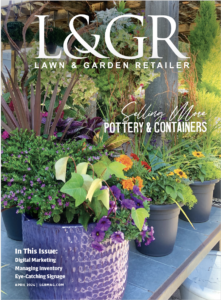Inventory… An Asset or a Liability?
It has been said many times before that what you are really selling is intangible: solutions to a consumers needs, desires, dreams and expectations. But it takes tangible products to deliver these solutions.
Managing Inventory
Deciding what to carry, how much to buy and how to manage it can be a daunting task. It can be even more daunting if you don’t have historical electronic data capture to refer to from the prior season or current data to show you where your potential markdown liabilities are or where your opportunities for increased sales might be. In many businesses, you have more dollars invested in your inventory than you do in physical plant and real estate. Managing your inventory investment wisely is the most important activity that determines whether you make a profit or take a loss each year.
The simple formula for managing inventory is to have the right products customers want at the exact time they need or want them. You also want the right quantities so you don’t lose potential sales or incur markdowns by having too much. The trick is to make inventory work for you and not you for the inventory. It is such a simple philosophy yet so difficult to attain, especially in a business dealing with perishables, fashion and weather.
But if we break down the activities and thought processes that go into developing a sound inventory management program, maybe we can make better decisions and improve profits at the end of the day. I always find when I break down things I do routinely into the individual activities that make up the process and really dissect them looking for opportunities to improve, I always learn something new that can make the process better.
What Should I Buy?
We need to remember the inventory we carry should be for our customers’ benefit. Inherent in this statement is that we need to know whom our customers really are and what they are trying to achieve with their purchases. Are they in mature neighborhoods, looking to replace or enhance their existing landscapes and gardens, or in new developments and just starting on their gardening journeys? Are they knowledgeable in product use or is this their first entry into the gardening experience? We have talked about customer segmentation in past columns, but this is critical to identifying what products you carry in your inventory.
Your inventory should support the image you want your store to convey to your core customer. Too often, we try to be too many things to too many different customer segments, and the inventory communicates a mixed and confused message. Stay focused!
Use technology to your benefit. When I was a buyer, one of the most difficult yet useful exercises I did each year was what we called a space war analysis. Using data capture and financial tracking software, we analyzed every item at the end of the season, ranking them by sales volume, net margin productivity (after factoring in clearance and distressed product markdowns), inventory turnover and space productivity. The software also allowed us to roll up individual items to the category level. By having this information available for review, I could readily see what the most profitable items and categories were, what items and categories were trending up and down and what product was impacting my profitability.
The most important benefit of this activity was it was a clear report card on my customers’ purchase behavior, not my personal biases. I focused on the top and bottom 10-20 percent of the producers in each of the measured areas and used this as a tool to determine which items and categories to de-emphasize or eliminate, freeing up inventory investment dollars to expand high productivity categories or add new lines.
Inventory’s Hidden Costs
In live goods, we often forget the amount of labor we have to invest to properly maintain the inventory we own. With payroll being one of your highest controllable expenses, maximizing inventory turnover greatly reduces the time needed to water, display and manage the markdown process. You are not in business to grow the inventory in your store but to sell it!
It may seem financially beneficial to take advantage of those pre-season discounts and buy in the entire season’s needs up front, especially in hard good categories. But will those discounts offset the potential liability of the imputed interest you’re carrying on the dollar investment or the end-of-season clearance markdowns because you guessed wrong on the quantities? The same thing holds true on some of those direct imports; the initial mark ups look enticing, but what is the net profitability if you only sell 50 percent of them because you missed the fashion trend or weather kept your customers away?
I believe there is benefit in many instances to using local distributors/wholesalers for hard goods rather than buying direct in large quantities. You can flow the inventory more effectively and implement inventory builds on highly seasonal products that have a violent peak. Yes, you may pay more for the product, but you are buying the ability to capture those peak sales and reduce your risk. And how much do those lost sales really cost you, not only in financial terms but in not being able to provide what customers need, forcing them to go to your competitor?
One positive to come from the pay by scan process is that it taught growers the benefits of flowing inventory throughout the season, matching the inventory to the actual sales activity and trends. The net result was that the product was fresher, more appealing to the consumer and more in tune with the micro-seasons, and it required less maintenance. The grower is reacting to actual, not anticipated, customer response, allowing for better inventory utilization and reduced markdowns. I’m not advocating that pay by scan is the right thing for independent garden center’s (IGC) to embrace, but there’s definitely a philosophical lesson here that you could apply to your own business.
Control Your Investment
Many IGCs have inventory controls at the macro level, meaning they don’t manage the investment dollars during the season at the item or category level but rather at the total garden center level. My recommendation is that you manage your investment and be open to buy at the category level at the bare minimum. Remember, the whole is the sum of the parts; if one category isn’t performing, you need to take appropriate, timely action to move that inventory, even if it means reducing prices in season. If you don’t take this action, you won’t have the dollars available to invest and chase categories that are performing above your plan, leaving sales on the table.
Try to have an open-to-buy reserve built into your pre-season inventory plan to allow you to jump on a new item or trend that you may see during the course of the season. If you commit every available dollar up front, you’ll miss the opportunity to add something new and unique that will excite your customer.
It is fundamentally interesting in how you look at a plant. For most of you, the plant itself is what excites you and why you are in the business you are in; plants are the fun part of your business and what gives you energy. But you also need to look at that plant, container or bag of fertilizer as a unit of inventory, the relatively unglamorous financial entity that needs to be managed, especially in the heat of the season.
No, looking at your product as a financial number isn’t sexy, exciting or, to most of us, stimulating. But managing the selection, flow and investment of your inventory is the single most important contributor to your sales and profits (or lack thereof).
Inventory can be your most important asset or your biggest liability. Which is it for you… ?


















 Videos
Videos





